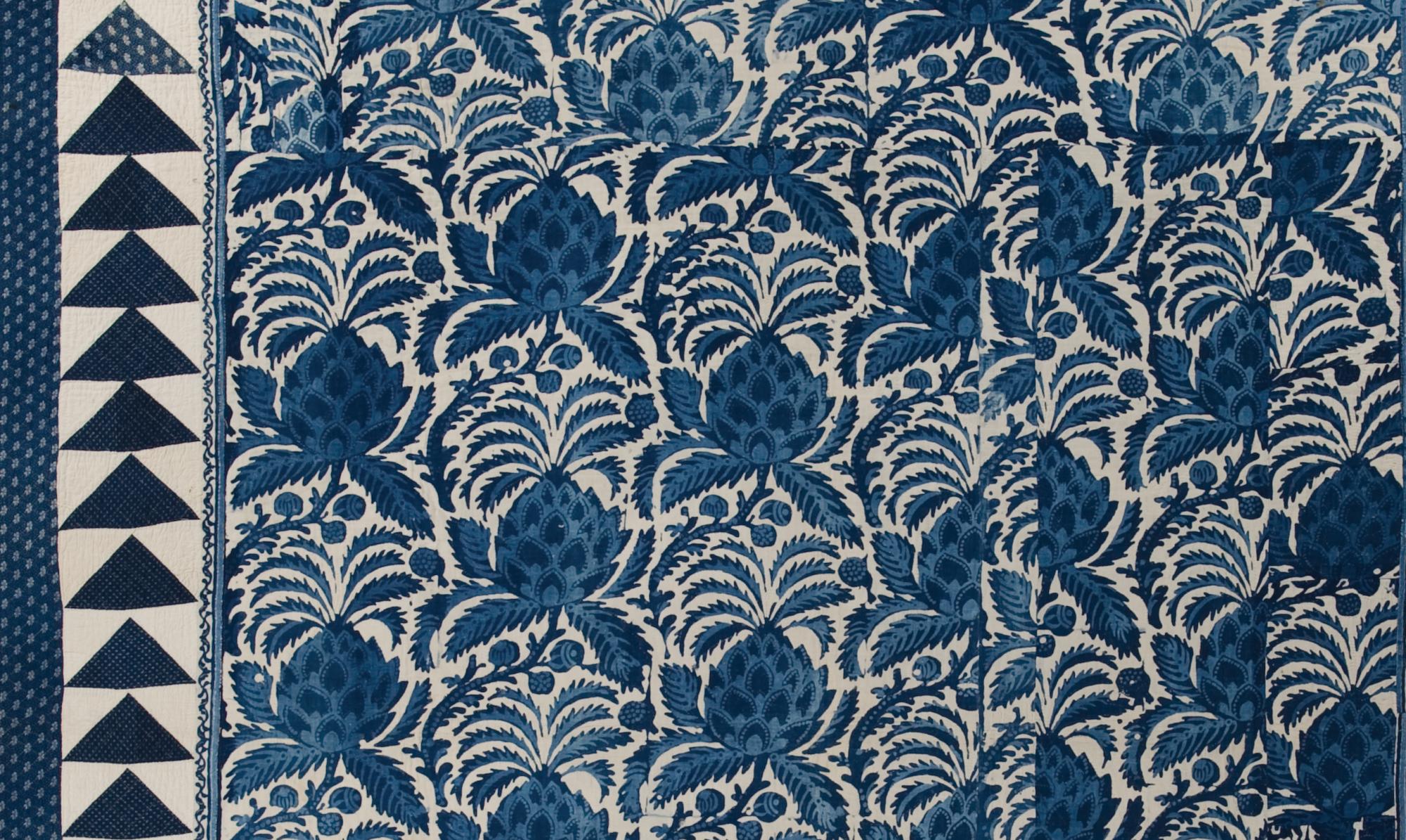
Indigo Gives America the Blues
Sept 7, 2012-June 2, 2013

Indigo has colored American cloth for centuries. Derived from several different plants in the indigofera family, indigo dye produces a multitude of colorfast blues, from pale sky blue to deep midnight blue. Its range of longlasting colors made it wildly popular and highly valued when it was first imported from India to Europe in the late 1400s, resulting in the nickname “Blue Gold.”
Antique American textiles of all kinds bear the mark of indigo. Fabrics for clothing, interior furnishings, and bedding all were dyed or printed with indigo.
Using indigo for dyeing, however, is a complicated process. Because it does not naturally dissolve in water or adhere to textile fibers, dyers had to develop complex methods for permanently fixing the indigo to fabric.
As modern technologies evolved, the designs and intricacy of indigo-dyed fabrics changed as well. Simple methods of applying indigo dye gave way to technologically advanced processes that resulted in greater design accuracy and increased production.
As you you look through this online exhibition, you will see that quilts, in particular, are an ideal source for appreciating the ways in which Indigo Gives America the Blues.